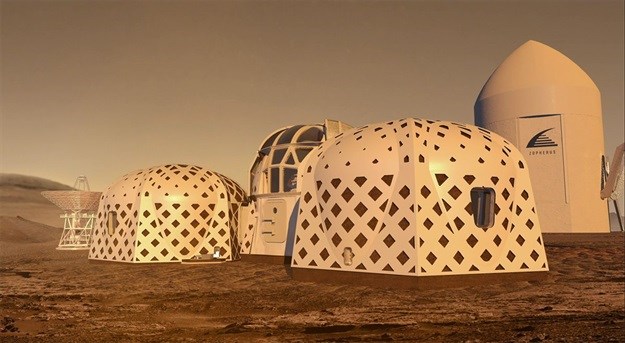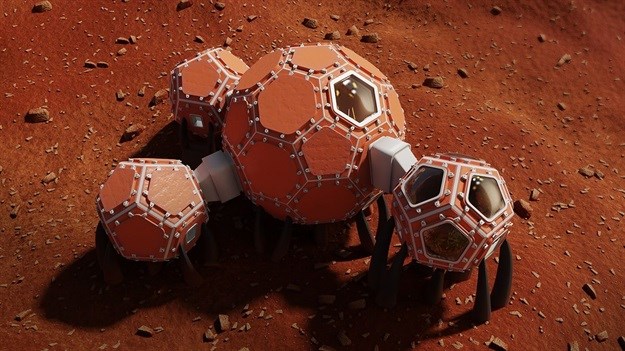
Top stories




The top three were awarded a share of the $100,000 prize purse. This stage of the competition required teams to create a full-scale habitat design, using modeling software. This level built upon an earlier stage that also required virtual modeling.
First launched in 2015, Foster + Partners' modular habitat was also among the 30 finalists for the 3D-Printed Habitat Challenge. The multi-level 3D-Printed Habitat Challenge put teams to the test in several areas of 3D-printing, including modeling software, material development and construction.
NASA's competition includes three major phases - the third (last phase) features the On-Site Habitat Competition, comprising five levels that test teams’ ability to advance technology to autonomously construct a habitat, and will culminate in a head-to-head habitat print.
Team SEArch+/Apis Cor won first place in the Phase 3: Level 4 software modeling stage of NASA’s 3D-Printed Habitat Challenge. The unique shape of their habitat allows for continuous reinforcement of the structure. Light enters through trough-shaped ports on the sides and top.
"Eleven team entries were scored and awarded points based on architectural layout, programming, efficient use of interior space, and the 3D-printing scalability and constructability of the habitat," said NASA in a statement.
Teams also prepared short videos providing insight into their designs as well as miniature 3D-printed models that came apart to showcase the interior design. Points were also awarded for aesthetic representation and realism. After evaluation by a panel of judges, NASA and challenge partner Bradley University of Peoria, Illinois, awarded the three teams.

Team Zopherus won second place in the Phase 3: Level 4 software modeling stage of NASA’s 3D-Printed Habitat Challenge. The team’s design would be constructed by an autonomous roving printer that prints a structure and then moves on to the next site.

The virtual design from team Mars Incubator won third place in the Phase 3: Level 4 software modeling stage of NASA’s 3D-Printed Habitat Challenge. The team is a collection of engineers and artists.
The 3D-Printed Habitat Challenge will culminate with a head-to-head subscale structure print, 1-4 May 2019, and the awarding of an $800,000 prize purse.
Article originally published on World Architecture Community.

Since 2006, World Architecture Community provides a unique environment for architects, architecture students and academics around the globe to meet, share and compete.
Go to: https://worldarchitecture.org/